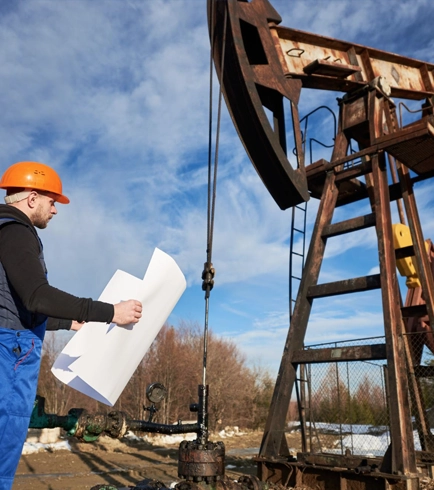Aug . 13, 2024 06:32 Back to list
Exploring Innovations in Submersible Deep Well Technology for Enhanced Water Extraction Efficiency
The Submersible Deep Well Innovations and Applications
Submersible deep wells have become an essential component in modern water extraction and geothermal energy systems. These wells are designed to operate below the water surface, ensuring efficient pumping even from significant depths. Innovations in technology and engineering have optimized submersible deep well systems, making them crucial for agriculture, municipal water supply, and even energy production.
One of the primary advantages of submersible deep wells is their ability to access groundwater that is situated far beneath the surface. Traditional well pumps can struggle to lift water from these depths, but submersible pumps, which are placed directly in the water, can deliver powerful and efficient performance. These pumps operate using a hermetically sealed motor, which pushes water to the surface through a series of connected pipes. This design minimizes the risk of pump cavitation, dramatically increasing the lifespan of the equipment.
The applications of submersible deep wells are vast. In agriculture, these systems allow farmers to irrigate their crops even in regions where surface water is scarce. By tapping into deep aquifers, farmers can ensure a consistent water supply for their fields, leading to higher yields and more stable food production. In urban areas, submersible pumps help manage municipal water systems, providing essential services in both residential and commercial settings. When natural disasters occur, such as floods or droughts, deep wells play a critical role in maintaining water supply stability.
submersible deep well

Submersible deep wells also hold significance in the geothermal energy sector. By accessing the Earth's natural heat through deep wells, engineers can harness energy in a sustainable manner. This renewable energy source can provide heating, electricity, and overall reduce dependency on fossil fuels. As the world increasingly seeks alternative energy sources, geothermal systems supported by submersible deep wells present a promising solution.
However, the implementation of submersible deep wells is not without challenges. One major concern is the potential for over-extraction of groundwater. Unsustainable practices can lead to the depletion of aquifers, resulting in land subsidence and ecological disruption. It is crucial for stakeholders to develop management strategies that balance water needs with environmental conservation. Effective regulations must be established to ensure that deep well usage remains sustainable over time.
Another challenge is the maintenance and operation of submersible pumps. The harsh underwater environment can lead to corrosion and mechanical failures. Regular checks and advancements in materials that resist wear and tear can mitigate these risks. Technological innovations, such as remote monitoring and smart sensors, have started to revolutionize maintenance practices, allowing for real-time oversight and reducing downtime.
In conclusion, submersible deep wells represent a vital technology for various applications in the modern world. Their ability to efficiently extract water from considerable depths makes them indispensable in agriculture, municipal services, and renewable energy production. Challenges associated with sustainability and maintenance call for careful planning and innovative solutions. As technology continues to advance, submersible deep wells will undoubtedly play an increasingly critical role in addressing the world's water and energy needs. By harnessing their potential responsibly, we can create a more sustainable future that balances human needs with environmental stewardship.
-
Submersible Water Pump: The Efficient 'Power Pioneer' of the Underwater World
NewsJul.01,2025
-
Submersible Pond Pump: The Hidden Guardian of Water Landscape Ecology
NewsJul.01,2025
-
Stainless Well Pump: A Reliable and Durable Pumping Main Force
NewsJul.01,2025
-
Stainless Steel Submersible Pump: An Efficient and Versatile Tool for Underwater Operations
NewsJul.01,2025
-
Deep Well Submersible Pump: An Efficient 'Sucker' of Groundwater Sources
NewsJul.01,2025
-
Deep Water Well Pump: An Efficient 'Sucker' of Groundwater Sources
NewsJul.01,2025
-
 Submersible Water Pump: The Efficient 'Power Pioneer' of the Underwater WorldIn the field of hydraulic equipment, the Submersible Water Pump has become the core equipment for underwater operations and water resource transportation due to its unique design and excellent performance.Detail
Submersible Water Pump: The Efficient 'Power Pioneer' of the Underwater WorldIn the field of hydraulic equipment, the Submersible Water Pump has become the core equipment for underwater operations and water resource transportation due to its unique design and excellent performance.Detail -
 Submersible Pond Pump: The Hidden Guardian of Water Landscape EcologyIn courtyard landscapes, ecological ponds, and even small-scale water conservancy projects, there is a silent yet indispensable equipment - the Submersible Pond Pump.Detail
Submersible Pond Pump: The Hidden Guardian of Water Landscape EcologyIn courtyard landscapes, ecological ponds, and even small-scale water conservancy projects, there is a silent yet indispensable equipment - the Submersible Pond Pump.Detail -
 Stainless Well Pump: A Reliable and Durable Pumping Main ForceIn the field of water resource transportation, Stainless Well Pump has become the core equipment for various pumping scenarios with its excellent performance and reliable quality.Detail
Stainless Well Pump: A Reliable and Durable Pumping Main ForceIn the field of water resource transportation, Stainless Well Pump has become the core equipment for various pumping scenarios with its excellent performance and reliable quality.Detail
